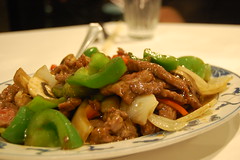Traditionally, opening a Champagne bottle has always been a way to celebrate milestones or toast the bride and groom on their marriage. Considered to be a versatile beverage, Champagne can be served with a meal or with dessert. For many years, this truly refreshing and exotic drink has been used as a way of celebration and just enjoying the times that lie ahead.
Champagne is derived from the vineyards of the French region. If you have a bottle and notice Champagne imprinted on the label, rest assured that the bottle was produced in the vineyards of France. If you do not get Champagne that was produced in the French regions, you are pretty much just purchasing a standard sparkling wine. You should also be sure that the name is spelled “Champagne”, with a capital C. French producers are really protective of this very name, and thus are they are the only ones that are authorized to use it.
Champagne is produced using three different types of grapes - Chardonnay, Pinot Noir, and Pinot Meunier. Noir and Meunier are types of black grapes, while the long-familiar Chardonnay is a type of white grape. The label on the bottle will stand for what type of Champagne you are purchasing, so you will recognize what flavor to expect. There are also kinds of this wine that are a mix of different grapes, offering rather an exquisite taste to say the least.
Just like sparkling wine, Champagne is really popular with celebrations and such. While it is actually debated to be a type of sparkling wine, Champagne is way better. You have to be mindful where you buy it though, as a lot of producers like to use low end grapes, which don’t taste the same. If you've ever tasted this wine before - you’ll know exactly what quality tastes like.
A lot of people favor Champagne because of the bubbles that are known to spew out once a bottle has been opened. The bubbles that spew out from this wine are the result of tiny drops of liquid that are agitated by the carbonic acid gas. Once the liquid is agitated, the bubbles form and shoot out of the bottle. This is a normal reaction of the double fermentation process that can only be observed with a bottle of Champagne.
The next time you have a celebration and want something to make the celebration a bit more interesting, you ought to grab a bottle of Champagne. Few things mark a celebration like the bursting bubbles of a fine bottle. You can find quality Champagne at ABC stores or other shops that sell alcoholic beverages. Even though it could cost you a bit of money - when you pop the top you’ll be delighted you bought it.







